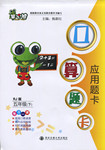��Ŀ����
17���������������У���ڿ�չ��ȫ������Χ��"��ѧ���Ƿ��б�Ҫ���ֻ�ȥѧУ"�������ۣ����У���༭дһ���ţ�������������������Լ�������������ͬѧ��Ϊ���ɷ�����ҳ���ͬѧ��ϵ����һ��ʱ�У�
�������ʦ��Ϊ����ѧ��������С���������Կأ����ֻ�����Ϸ���������˷�ʱ�䣻���������ʱȣ� ʹ��У�ڹ��õ绰��
��Ĺ۵㣺
ע�⣺
1���ŵĿ�ͷ��Ϊ��д�ã�
2��������100���ң������Ѹ�����������
3���ο��ʻ㣺�ʱȣ�vie with����У�ڣ�on the campus
Dear editor��
I'm writing to tell you about the discussion we've had about whether it is necessary for middle school students to carry mobile phones to school��
____________________________________________________________________________________________________________________________________________________________________________________________________________________________________________________________
���� �߷־��ͣ�
����һ��
The majority of the students think that it is more convenient for them to keep in touch with their parents and classmates if they have a mobile phone�������ѧ����Ϊ����������ֻ�������������ǵĸ�ĸ��ͬѧ������ϵ��
���к��и��Ͼ䣬think���DZ���Ӿ䣬�Ӿ��к���if����������״��Ӿ䣮
���Ͷ���
In my opinion��following the fashion is understandable�����ҿ�������ʱ���ǿ�������ģ�
�������������
��� Dear editor��
I'm writing to tell you about the discussion we've had about whether it is necessary for middle school students to carry mobile phones to school��
The majority of the students think that it is more convenient for them to keep in touch with their parents and classmates if they have a mobile phone��And what's more��it's a fashion����һ�ֹ۵㣩
However��most teachers think that middle school students are not old enough to control themselves�����߷־���һ��It is a waste of time for students to play games and send messages to each other by mobile phone��And it's easy to cause the students to vie with each other�����߷־��Ͷ���If necessary they can make phone calls by using public phones on the campus������һ�ֹ۵㣩
In my opinion��following the fashion is understandable��But as middle school students��we should put all our heart into our studies�����������ߵĹ۵㣩
���� �������۵��Ӣ����������У�Ҫ��ȷ���в�ͬ�Ĺ۵㣬�������ߵĹ۵㣬�ʵ�ʹ�ù������ʹ���������ᣮ

 �����ܿ����ϵ�д�
�����ܿ����ϵ�д�| A�� | this | B�� | that | C�� | it | D�� | one |
| A�� | the robber having caught | B�� | catch the robber | ||
| C�� | the robber being caught | D�� | the robber to be caught |